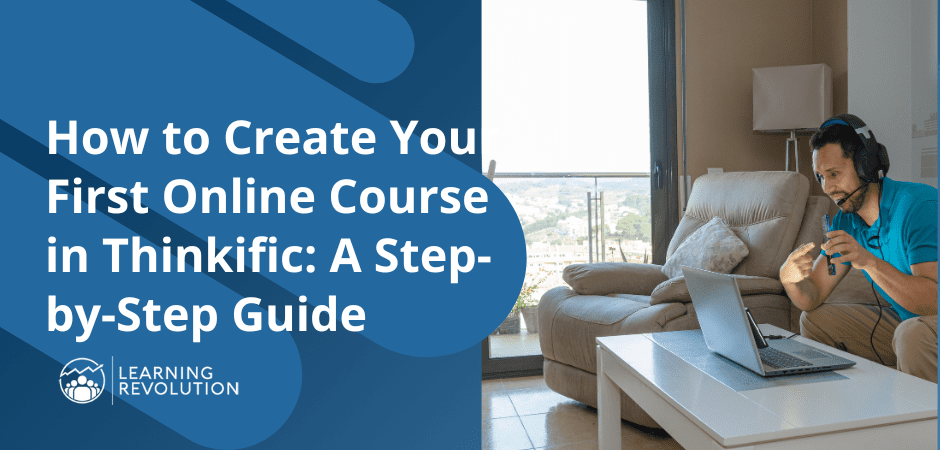

You’ve probably heard that the market for online courses is booming. That the global market for e-learning will reach USD 390.6 billion by 2026, And, it seems like with a market that big, it would be relatively easy to succeed at selling online courses.
The truth, of course, is that the online course business is like most other businesses. Most start-ups fail – and that includes most online course creators aiming to sell their courses.
In my experience, there are 7 key reasons that aspiring online course sellers fail:
1. They lack focus and commitment
This one is probably obvious, but it still needs to be included in this list. Creating and selling online courses either is a priority or it isn’t. There’s no getting around the fact that creating content or organizing any content you already have takes time and effort.
Putting it into a form that works for online delivery takes time and effort.
Marketing effectively takes time and effort (and can only be partly outsourced).
Supporting your customers takes time and effort.
You get the point.
Most online course creators simply aren’t willing or able to put in the time and effort. End of story.
If you are willing and able, you are already way ahead of the pack.
2. They get bogged down in tools and technology
Probably because I get a lot of visitors on Learning Revolution who are looking for a platform to sell online courses, I see this again and again. People are obsessed with finding the perfect platform, as if this will magically transform their content into a successful business.
Newsflash: it won’t.
Yes, you want to pick a platform that truly aligns with your teaching goals and business needs – and my free platform selection guide can definitely help with that – but most of the platforms out there – at least the ones listed here – will do that.
The time that most people put into platform selection would be much better spent on strategy, marketing, and developing truly high impact learning experiences.
If you want a short cut to picking the the right platform, my advice is:
- Thinkific is a great all around bet, especially if you already have an established Web site
- Kajabi is great if your course needs are pretty simple and you want a platform that will also run you Web site and marketing efforts
- TalentLMS is my top pick if you need to jump up to a more sophisticated level – e.g., offering SCORM courses, awarding continuing education credit.
I also recommend using a tool like Camtasia for creating really professional videos to use in your courses.
That’s it. Stop obsessing about the technology and get on with it!
3. They don’t have a brand
Let’s face it: it’s crowded out there.
Everyone and her mother has an online course, and many online course creators are giving them away or selling them at commodity prices on sites like Udemy. Even if you are absolutely convinced what you offer is better than the competition, it won’t matter if nobody knows who you are.
You’ve got to have a brand if you want to stand out in the market for online courses. That doesn’t mean you need to be a household name, but it does mean you or your company need to be seen as a recognized expert among the specific audience you aim to serve. (If you are attempting to sell courses, you are an expertise-based business.)
I’m not going to try to go into all of the ins and outs of brand building here – that deserves a whole separate post – but in the meantime I will point you to the excellent work of my friend Dorie Clark. Nobody knows brand building like she does.
4. They haven’t developed an audience
This goes hand in hand with building a brand, but is worth mentioning on its own. As I wrote in Leading the Learning Revolution, Kevin Kelly’s concept of 1000 true fans definitely applies when it comes to being an edupreneur. If you want to succeed beyond an initial course launch, you need a group of people who will buy just about anything you produce over time.
Just think about that for a minute.
If you have 1000 people who will pay $100 every time you release a course, that’s a minimum of $100K per course – and then, of course, you’ll pick up additional sales from people who are not regular purchasers. For the vast majority of online course creators, this is a lot more money than they are making right now.
Of course, building that kind of audience isn’t easy and it doesn’t happen overnight, but you need to have it as a goal right from the beginning. That means making content marketing a major focus, making sure you take advantage of SEO to attract traffic to your offerings, and using lead magnets effectively to convert visitors into prospects.
5. They don’t sell early enough
The key to the 1000 true fans approach, of course, is that they have to actually buy for it to work. What happens a lot of the time, though, is you get people signed up on your e-mail list – maybe in exchange for a lead magnet of some sort – and you keep sending them free content without ever asking them to pay for anything. Then, when you do finally ask them to buy something …
Crickets.
This is a mistake I have definitely made and have only recently really woken up to and begun to correct. You really need to get people to buy something early on. It doesn’t have to be – in fact, in most cases, it probably shouldn’t be – something large. Anywhere from a few dollars to $20 or so can do the trick.
This is what’s often referred to as a tripwire.
It may be for an eBook, a brief video series, or a group consultation. The main thing is to get people used to the idea of spending money with you. Once they have bought once, they are much more likely to buy again.
Of course, the initial small purchase is ideally a stepping stone to a higher priced, higher value offer – which may be your actual course. And that leads to the next point …
6. They don’t charge enough
Most online course creators simply aren’t going to sell at high volumes. So, once you move past the initial low-price purchase I discussed in the last section, you have to price your actual courses at a level that makes your business sustainable.
To make this clear, just go back to the 1000 true fans model. At $100 per course, you have a decent business with 1000 fans. At $12 – a price you often see Udemy course show up at – you may as well go work at McDonalds.
And, of course, if you can price at $497, $997, or more – well, then you’ve really got something.
The fact is, most course producers could be charging much more.
If you have established a brand, developed an audience, and capitalized on what is unique about your course, then you should be able to charge a sustainable price. In fact, I encourage course sellers to think seriously about what the impact would be of tripling their prices. (You may also want to check out my post on how to price online courses.)
7. They don’t deliver results
In some ways, it’s just too easy to publish an online course these days. Anyone with a set of PowerPoint slides or videos can slap them into a platform, maybe add a quiz or two, and call it a course.
In most cases, no attention has been paid to adult learning principles; there was no valid process to developing the course or piloting it. As a result, the course sucks from an educational standpoint. It’s just information shoveled over the Web and doesn’t lead to positive change for the learner.
When this happens, the learner won’t be coming back for more. A potential true fan has been lost, and the business is not sustainable.
This doesn’t mean that every online course creator has to have a degree in instructional design. It does mean, though, that you need to school yourself in the fundamentals of effective learning. For this, I highly recommend Harold Stolovitch’s Telling Ain’t Training and Michael Allen’s Guide to E-learning.
I also recommend checking out this Webinar on student success that I did with Greg Smith.
The Path To Success in Selling Online Courses
It’s simple, but not easy: do the opposite of everything discussed above. In other words:
- Make the commitment: be willing and able
- Don’t obsess about tech: make your choices and move on
- Focus from the beginning on building a brand
- And, focus from the beginning on building an audience
- Start selling as soon as you get a subscriber or follower
- Charge more for your courses
- Make sure you are designing your courses to deliver results
While all of that won’t absolutely guarantee success as an online course creator, you aren’t very likely to succeed at selling online courses without doing them. Get started today.
Table of Contents


